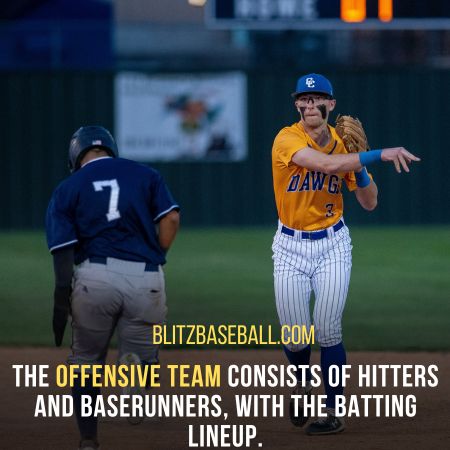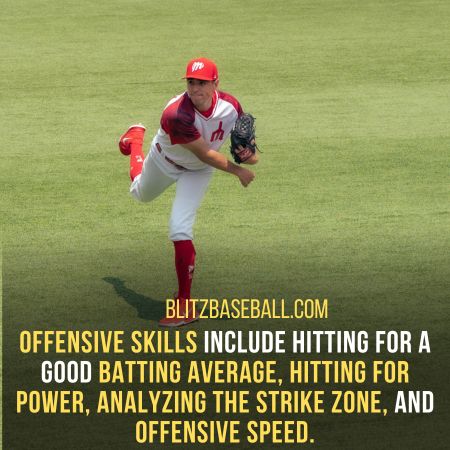Offense in baseball encompasses a range of skills, strategies, and positions aimed at scoring runs and outscoring the opposing team.
This article explores the various components of offense in baseball, including offensive skills such as hitting for average and power, analyzing the strike zone, and possessing speed.
It also delves into offensive actions, such as hitting the ball, walking, and running the bases.
Additionally, the article discusses offensive strategies like hit and run, stealing bases, and sacrifice bunts.
By understanding the what is offense in baseball, players and fans can gain a deeper appreciation for the game.
Key Takeaways
- Offense in baseball is the team that aims to score runs by utilizing the skills and actions of batters and baserunners.
- Offensive skills include hitting for a good batting average, hitting for power, analyzing the strike zone, having arm strength, and possessing offensive speed.
- The offensive team consists of hitters and baserunners, with the batting lineup including the leadoff hitter, second batter, third batter, fourth batter, and fifth batter.
- Offensive strategies such as hit and run, sacrifice bunt, stealing bases, squeeze play, and hitting behind the runner can be used to gain an advantage and score runs.
What Is Offense In Baseball?
Offense in baseball encompasses the team responsible for scoring runs, consisting of batters and baserunners, with the objective of outscoring the opposing team. The offensive team can have at least one batter and 1-3 baserunners, who are batters that successfully advance to the bases.
Offensive skills and actions play a crucial role in achieving success. These skills include hitting for a good batting average, hitting for power, analyzing the strike zone, having arm strength, and possessing offensive speed.
The offensive team’s lineup includes designated positions for both hitters and baserunners. Hitters take turns batting and running the bases, while baserunners are players who have advanced to the bases.
Understanding the components and skills of offense is essential for creating effective strategies and achieving success in baseball.
Offensive Skills and Actions
- Possessing arm strength
- Exhibiting offensive speed
These skills allow batters to effectively contribute to their team’s objective of scoring runs. A good batting average indicates a player’s ability to consistently make contact with the ball, increasing the chances of reaching base.

Power hitting, on the other hand, involves driving the ball far and deep into the outfield, potentially resulting in extra-base hits or home runs. Analyzing the strike zone helps batters determine which pitches to swing at and which to let go, improving their chances of getting on base.
Possessing arm strength allows baserunners to quickly advance to the next base, while offensive speed enables them to steal bases and score runs more easily.
These skills, when combined and executed effectively, contribute to a team’s offensive success.
Positions and Lineup
The positions and lineup of the offensive team are integral to the overall structure and organization of a baseball team. The offensive team consists of two types of positions: hitters and baserunners.
Hitters take turns batting and running the bases, while baserunners are players who have successfully advanced to the bases. The batting lineup of the offensive team follows a specific order, including the leadoff hitter, second batter, third batter, fourth batter, and fifth batter.
Each player in the lineup has a designated role and specific skills that contribute to the team’s offensive success. The lineup table below showcases the typical positions and batting order in a baseball team:
| Position | Batting Order |
|---|---|
| Leadoff Hitter | 1st |
| Second Batter | 2nd |
| Third Batter | 3rd |
| Fourth Batter | 4th |
| Fifth Batter | 5th |
This lineup ensures that the team’s strongest hitters have the most opportunities to drive in runs and contribute to the offense’s overall performance.

Offensive Strategies and Terms
One important aspect of a successful baseball team is the implementation of various offensive strategies and terms. These strategies are designed to maximize the team’s scoring opportunities and put pressure on the opposing defense.
One commonly used strategy is the hit and run, where the baserunner starts running towards the next base as the batter makes contact with the ball.
The sacrifice bunt is another strategy, where the batter intentionally bunts the ball to advance the baserunners while sacrificing their own chance to get on base.
Stealing bases involves the baserunner attempting to advance to the next base while the pitcher is delivering the ball.
The squeeze play is a risky strategy where the baserunner on third base starts running towards home plate as the batter attempts to bunt the ball.
Hitting behind the runner refers to the batter intentionally hitting the ball to the opposite field to allow the baserunner to advance.
These offensive strategies, when executed effectively, can change the course of the game and increase the team’s chances of scoring runs.

Frequently Asked Questions
How does the offense decide on the batting order for a game?
The offense decides on the batting order for a game based on various factors such as player skills, past performances, and team strategy. The order is typically determined by the coach or manager of the team.
What are some common defensive strategies that the offense needs to be aware of?
Some common defensive strategies that the offense needs to be aware of in baseball include shifting the infield, using defensive positioning, making strategic pitching changes, and employing pitchouts or intentional walks to control the offense.
How does weather affect offensive performance in baseball?
Weather conditions, such as wind, temperature, and humidity, can affect offensive performance in baseball. For instance, strong winds can make it difficult for batters to hit the ball, while hot and humid conditions can affect a player’s stamina and grip on the bat.
Are there any specific training techniques that can improve a player’s offensive skills?
Specific training techniques, such as batting practice, strength and conditioning exercises, and video analysis, can improve a player’s offensive skills in baseball. These techniques focus on developing hitting ability, speed, power, and overall performance at the plate.
How does the size and shape of the baseball field impact offensive strategies?
The size and shape of the baseball field can impact offensive strategies by influencing the distance a ball needs to be hit for a home run, the amount of space available for baserunners to advance, and the positioning of defensive players.
Conclusion
In conclusion, offense in baseball refers to the team’s effort to score runs and defeat the opposing team. It involves various skills such as hitting for average and power, analyzing the strike zone, and possessing offensive speed.
The offensive team consists of hitters and baserunners, with hitters taking turns batting and baserunners being players who have advanced to the bases.
Offensive strategies like hit and run, sacrifice bunt, and stealing bases are utilized to gain an advantage.
Understanding offensive concepts and employing effective strategies are crucial in achieving success in baseball.
